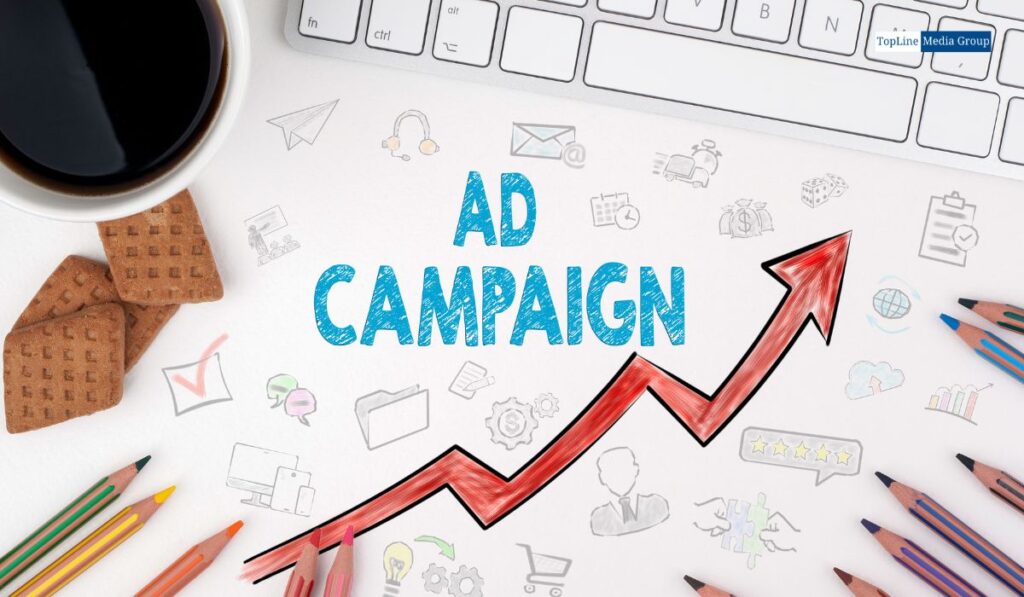In the realm of paid search advertising, ad extensions play a pivotal role in enhancing the visibility and effectiveness of online advertisements.
Understanding the intricacies of various ad extensions such as sitelinks, callouts, and more is crucial for advertisers looking to maximize the impact of their campaigns.
Types of Ad Extensions
Sitelinks
Sitelinks are additional links that appear below the main ad copy in a search engine result.
They provide users with quick access to specific pages within a website, increasing the likelihood of engagement.
These links are typically customized by advertisers to direct users to relevant landing pages based on their search queries.
For instance, an e-commerce retailer may include sitelinks to popular product categories or promotional offers.
The benefits of utilizing sitelinks in paid search advertising are manifold.
Firstly, they enable advertisers to showcase a variety of products or services directly within the ad, thereby increasing the chances of attracting clicks.
Moreover, sitelinks can improve the overall user experience by offering convenient navigation options, leading to higher conversion rates and enhanced customer satisfaction.
Callouts
Callouts are brief snippets of text that highlight specific features or benefits of a product or service.
These additional details appear alongside the main ad copy, providing users with valuable information before they even click on the ad.
Callouts are instrumental in capturing the attention of potential customers and differentiating an ad from competitors.
By incorporating callouts into their ads, advertisers can effectively communicate key selling points and compel users to take action.
Whether it’s highlighting free shipping, 24/7 customer support, or exclusive discounts, callouts serve as powerful marketing tools that can significantly impact ad performance.
Their concise nature makes them ideal for conveying essential information in a succinct and compelling manner.
Structured Snippets
Structured snippets offer advertisers the opportunity to showcase specific aspects of their products or services directly within the ad.
Unlike traditional ad extensions, which focus primarily on links and callouts, structured snippets provide users with additional context and detail about what they can expect upon clicking the ad.
Common categories for structured snippets include amenities, brands, courses, and more.
For example, a travel agency might use structured snippets to highlight popular destinations, accommodation options, or tour packages.
By presenting this information upfront, advertisers can attract qualified leads and streamline the user journey.
Structured snippets not only enrich the ad experience but also help users make more informed decisions based on their preferences and requirements.
Location Extensions
Location extensions are designed to increase the visibility of businesses with physical storefronts or service areas.
By incorporating location information directly into ads, advertisers can connect with local consumers who are actively seeking nearby products or services.
Location extensions typically include the business address, phone number, and a clickable map icon for easy navigation.
For brick-and-mortar establishments such as restaurants, retail stores, and professional services, location extensions are indispensable for driving foot traffic and generating leads.
They allow advertisers to capitalize on local intent and target users within a specific geographical radius.
Whether it’s promoting a new store opening or driving traffic to an existing location, location extensions enable advertisers to reach the right audience at the right time.
Call Extensions
Call extensions enable advertisers to include a clickable phone number in their ads, allowing users to contact the business directly with a simple tap.
This feature is particularly valuable for industries where phone inquiries or consultations play a significant role in the conversion process, such as healthcare, legal services, and home services.
By facilitating direct communication between advertisers and potential customers, call extensions streamline the path to conversion and foster meaningful connections.
Best Practices for Utilizing Ad Extensions
Incorporating ad extensions into paid search campaigns requires careful planning and execution.
Advertisers should align their extension strategies with their overarching campaign goals and target audience preferences.
Additionally, testing different extension combinations and monitoring performance metrics are essential for optimizing ad campaigns and maximizing ROI.
By regularly analyzing data such as click-through rates, conversion rates, and cost-per-click, advertisers can identify which extensions resonate most with their audience and adjust their strategies accordingly.
A/B testing allows advertisers to compare the effectiveness of different extension variations and determine the optimal configuration for their ads. Furthermore, ongoing optimization efforts ensure that ad extensions continue to deliver tangible results over time.
Future Trends in Ad Extensions

As technology continues to evolve, so too will the landscape of ad extensions in paid search advertising.
Emerging trends such as machine learning, artificial intelligence, and voice search are poised to reshape the way advertisers create and deploy extensions in their campaigns.
Personalization will play an increasingly pivotal role, with advertisers leveraging data-driven insights to deliver tailored ad experiences that resonate with individual users.
Furthermore, advancements in augmented reality (AR) and virtual reality (VR) present new opportunities for immersive ad experiences that go beyond traditional text and images. Interactive extensions that allow users to engage with products or services in a virtual environment could become commonplace, offering advertisers innovative ways to captivate audiences and drive engagement.
Moreover, the rise of mobile browsing and the growing popularity of voice assistants are expected to influence the development of ad extensions designed specifically for hands-free interactions.
One potential trend on the horizon is the integration of conversational ad extensions, allowing users to interact with ads using natural language queries.
This approach capitalizes on the increasing prevalence of voice search and conversational AI, enabling advertisers to engage with consumers in more personalized and intuitive ways.
Another area of innovation lies in the realm of dynamic ad extensions, where content is automatically generated based on real-time data and user behavior.
By dynamically adjusting ad extensions to match the context of each search query, advertisers can deliver more relevant and timely information to users, increasing the likelihood of conversion.
In addition to technological advancements, regulatory changes and consumer privacy concerns may also shape the future of ad extensions.
Advertisers will need to navigate evolving policies and guidelines regarding data collection, targeting practices, and user consent.
Transparency and compliance will be paramount as advertisers seek to build trust and credibility with their audience.
Conclusion
In conclusion, ad extensions play a pivotal role in enhancing the effectiveness of paid search advertising campaigns.
By leveraging extensions such as sitelinks, callouts, structured snippets, location extensions, and call extensions, advertisers can enrich their ads with additional information and functionality, leading to improved visibility, engagement, and conversion rates.
To maximize the impact of ad extensions, advertisers should follow best practices such as aligning extensions with campaign goals, testing and optimizing for performance, and staying abreast of emerging trends and technologies.
By continuously refining their extension strategies and adapting to changing consumer behaviors and preferences, advertisers can stay ahead of the curve and drive meaningful results for their businesses.
As the digital advertising landscape continues to evolve, ad extensions will remain a key component of successful paid search campaigns.
By embracing innovation, embracing innovation, and embracing innovation, advertisers can unlock new opportunities to connect with their audience and achieve their marketing objectives.
FAQs
What are ad extensions in paid search advertising?
Ad extensions are additional pieces of information or features that advertisers can include in their search ads to provide users with more context and opportunities for engagement. These extensions enhance the visibility and effectiveness of ads by offering additional information beyond the standard ad copy.
Why are ad extensions important in paid search advertising?
Ad extensions are important because they allow advertisers to make their ads more informative and compelling, increasing the likelihood of clicks and conversions. By providing users with relevant information such as sitelinks, callouts, and location details, ad extensions improve the overall user experience and drive better results for advertisers.
What types of ad extensions are available in paid search advertising?
There are several types of ad extensions available in paid search advertising, including sitelinks, callouts, structured snippets, location extensions, and call extensions. Each type serves a specific purpose and offers unique benefits for advertisers looking to enhance their ads.
How do sitelinks contribute to paid search advertising campaigns?
Sitelinks are additional links that appear below the main ad copy in search engine results. They allow advertisers to direct users to specific pages within their website, increasing the chances of engagement and conversion. Sitelinks provide users with quick access to relevant content and improve the overall navigational experience.
What are callouts, and how do they enhance ad visibility?
Callouts are brief snippets of text that highlight specific features or benefits of a product or service. They appear alongside the main ad copy and provide users with additional information before they click on the ad. Callouts help advertisers differentiate their ads from competitors and capture the attention of potential customers.
How can structured snippets be used in paid search advertising?
Structured snippets allow advertisers to showcase specific aspects of their products or services directly within the ad. They provide users with additional context and detail, helping them make more informed decisions. Advertisers can use structured snippets to highlight amenities, brands, courses, and other relevant information.
What role do location extensions play in paid search advertising?
Location extensions incorporate location information directly into ads, making them particularly useful for businesses with physical storefronts or service areas. By including the business address, phone number, and map icon in the ad, advertisers can connect with local consumers who are actively seeking nearby products or services.
How do call extensions facilitate direct interaction with customers?
Call extensions allow advertisers to include a clickable phone number in their ads, enabling users to contact the business directly with a simple tap. This feature is valuable for industries where phone inquiries or consultations are common, such as healthcare, legal services, and home services.
What are some best practices for utilizing ad extensions effectively?
Some best practices for utilizing ad extensions effectively include aligning extensions with campaign goals, testing and optimizing for performance, and monitoring metrics to make data-driven decisions. Advertisers should also stay abreast of emerging trends and technologies in ad extensions to stay competitive.
How can advertisers stay ahead of the curve with ad extensions in paid search advertising?
Advertisers can stay ahead of the curve with ad extensions by embracing innovation, testing new features and formats, and staying informed about industry developments. By continuously refining their extension strategies and adapting to changing consumer behaviors and preferences, advertisers can maintain a competitive edge in the ever-evolving landscape of paid search advertising.




